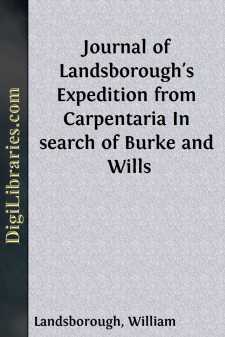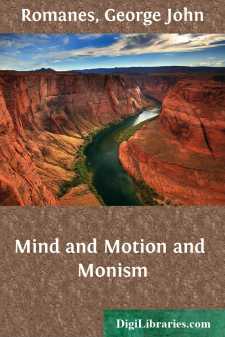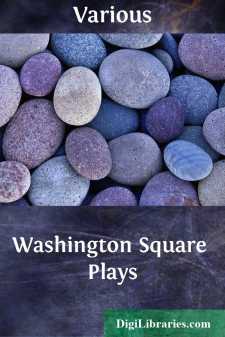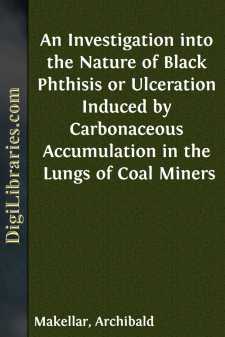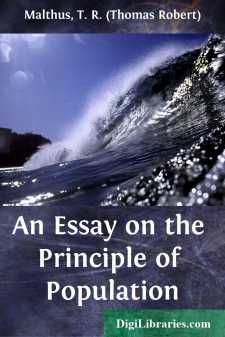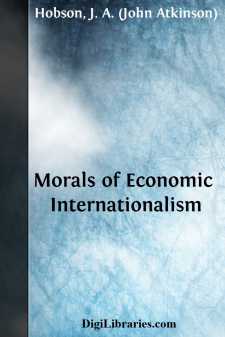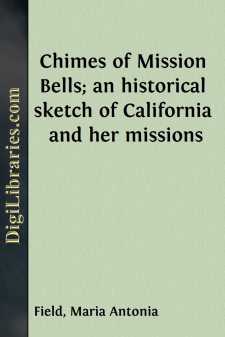Non-Classifiable
- Non-Classifiable 1768
Non-Classifiable Books
Sort by:
I have promised the children to write something for them about their favourite story-teller, Juliana Horatia Ewing, because I am sure they will like to read it. I well remember how eagerly I devoured the Life of my favourite author, Hans Christian Andersen; how anxious I was to send a subscription to the memorial statue of him, which was placed in the centre of the public Garden at Copenhagen, where...
more...
LANDSBOROUGH'S EXPEDITION. The readers of this pamphlet are no doubt aware that the anxiety entertained for the fate of Burke and Wills led to the formation of several expeditions in their search. The first of these was formed in Melbourne and entrusted to the command of Mr. Howitt. The second in Adelaide, under Mr. McKinlay. The third from Rockhampton, under Mr. Walker; and the fourth from...
more...
MIND AND MOTION [REDE LECTURE, 1885.] The earliest writer who deserves to be called a psychologist is Hobbes; and if we consider the time when he wrote, we cannot fail to be surprised at what I may term his prevision of the most important results which have now been established by science. He was the first clearly to sound the note which has ever since constituted the bass, or fundamental tone, of...
more...
by:
Various
INTRODUCTION The rigid conventionality of the theatre has been frequently remarked upon. Why the world should ever fear a radical, indeed, is hard to see, since he has against him the whole dead weight of society; but least of all need the radical be dreaded in the theatre. When the average person pays money for his amusements, he is little inclined to be pleased with something which doesn't amuse...
more...
PREFACE. An abstract of the investigations into the nature of carbonaceous infiltration into the pulmonary tissues of coal miners, was read by Dr Makellar at a meeting of the Medico-Chirurgical Society of Edinburgh, Wednesday, 8th July, 1845, Dr Gairdner, President, in the Chair. Reference was made, in particular, to the East Lothian coal-miners. The carbonaceous disease described, was stated to be...
more...
CHAPTER 1 Question stated—Little prospect of a determination of it, from the enmity of the opposing parties—The principal argument against the perfectibility of man and of society has never been fairly answered—Nature of the difficulty arising from population—Outline of the principal argument of the Essay The great and unlooked for discoveries that have taken place of late years in natural...
more...
The notes on Sculpture. Compared with the mass of manuscript treating of Painting, a very small number of passages bearing on the practice and methods of Sculpture are to be found scattered through the note books; these are here given at the beginning of this section (Nos. 706-709). There is less cause for surprise at finding that the equestrian statue of Francesco Sforza is only incidentally spoken...
more...
THE MORALS OFECONOMICINTERNATIONALISM It ought not to be the case that there is one standard of morality for individuals in their relations with one another, a different and a slighter standard for corporations, and a third and still slighter standard for nations. For, after all, what are corporations but groupings of individuals for ends which in the last resort are personal ends? And what are...
more...
Read at the Crowning of the Serra Statue, Monterey, Nov. 23, 1913. The fickle world ofttimes applauds the riseOf men whose laurels are but vainly won,Whose deeds their names could not immortalizeFor their soul-toils were wrought for transient ends;But heroes of the Cross, they truly greatShall live, their halo shall no hand of fate Have power to rob, albeit oblivious yearsMay veil the radiance of their...
more...
Sir,—It may probably occur to you that we have met, and visited, and conversed; on my side, with interest. You may remember that you have done me several courtesies, for which I was prepared to be grateful. But there are duties which come before gratitude, and offences which justly divide friends, far more acquaintances. Your letter to the Reverend H. B. Gage is a document which, in my sight,...
more...



